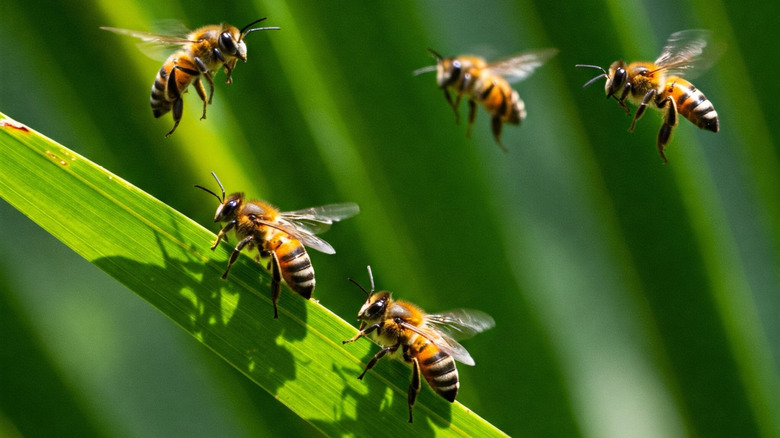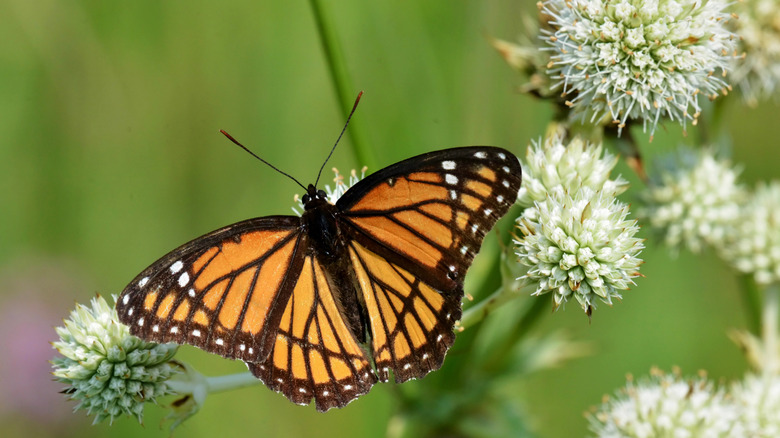The Hardy & Colorful Perennial That Will Have Pollinators Gathering In The Garden
Pollinators have long been crucial players in a healthy garden. Bees, butterflies, moths, beetles, and hummingbirds, among others, in search of food carry pollen from one plant to another, enable the receiving plant to make seeds and fruit. Without pollination, plants wouldn't be able to grow or reproduce. In many instances, that impacts what we put on our plates. According to the USDA, 35% of the food crops on Earth rely on pollinators. Climate change, urban development, pollution, and pesticides are among the top reasons why this precious animal population is declining — and why our communities can benefit from adding gardens for butterflies, hummingbirds, and other pollinators.
Unfortunately, we have little control over these factors, but what we can do is invite more winged visitors to our gardens. One way to do so is by being intentional with what you plant. For example, consider lemon bee balm (Monarda citriodora), butterfly milkweed (Asclepias tuberosa), or this unique purple flower that will attract pollinators to your yard like magic.
If you're in USDA Hardiness Zones 3 through 8, adding the perennial rattlesnake master (Eryngium yuccifolium) to your garden will provide visual interest while also enticing bees, wasps, flies, and butterflies. Its hardy blue-green stalks stretch up to 5 feet, with a spread of 2 to 3 feet. On top of the stems are globe-shaped clusters that each have over 100 tiny white-green flowers, giving pollinators plenty of unique color to enjoy.
Planting rattlesnake master in your garden
Technically, the plant's common name has nothing to do with rattlesnakes. The moniker came from the mistaken belief that it was used to concoct an antidote for rattlesnake venom. However, when it comes to the plant's ideal environment, the association with rattlesnakes may clue you in on what the plant needs to thrive. The plant is native to central and eastern United States, specifically those regions' prairies, savannas, and woods, where it is known as a particularly hardy plant.
Rattlesnake masters like full sun, and moist, well-drained soil, but also can tolerate drought, dry soil, or shallow rocky and clay soil. Although they are known to be low maintenance, less-than-ideal conditions like overly fertile soil or insufficient sunlight can result in a sprawling rather than upright, growing habit. In the garden, they work well among rock garden plants and prairie-like settings.
After the blooming season of June through September, the round flower heads dry up and turn brown, giving your garden some winter character during its barest months. The towering stems will complement the height of shorter plants, and offer contrast against brighter flowers. Group them with grasses and other eye-catching, colorful pollinators like prairie blazing star (Liatris pycnostachya), grown in zones 3 to 9, or black-eyed Susan (Rudbeckia hirta), suitable for zones 3 to 7. The rattlesnake master's spiny leaves can be prickly, so be mindful of planting them in high-traffic areas.

